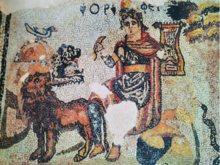
Ulpiana was an ancient Roman city located in what is today Kosovo. It was also named Justiniana Secunda. Ulpiana is located in the municipality of Gračanica, 12 km southeast of Pristina. The Minicipium Ulpiana or Iustiniana Secunda was proclaimed an archaeological park under the permanent protection of Kosovo by the Kosova Council for Cultural Heritage in 2016. The archaeological park has an area of 161.10 hectares and a surrounding protection zone of 96.23 hectares. Ulpiana was among the largest settlements in the Balkans in late antiquity.
Bassania was an Illyrian city that came under Roman control during the Illyrian Wars. It was located close to the ancient city of Lissus in southern Illyria, modern Albania. The inhabitants of the city were called Bassanitae. The time when the Bassanitae became socii of the Romans is still unknown.
Classical music in Kosovo refers to the art music cultivated in Kosovo. The roots of classical music in Kosovo are found in the 1940s and include the time period from the times when Kosovo was part of Yugoslavia to this day. It can be said that there is a tradition of classical music in Kosovo, however, compared to other Balkan countries and especially European countries this tradition is younger. Classical music in Kosovo reaches back about 70 years. Even though in a short period of time, this music has evolved, passing through generations of composers and artists. In his book Albanian: Zhvillimi i stileve në veprat e kompozitorëve shqiptarë të Kosovës, Engjëll Berisha comments:
"The diversity of styles in Albanian music [of Kosovo], its national patterns with sound idea-aesthetic foundations are a characteristic of the European musical reality, so many many works are of interest abroad, too, because during this relatively short period Albanian classical music in Kosovo has compensated for the delay in its development."

Archaeology of Kosovo as a field of study and research was started in the second half of the 20th century. Kosovo's field of archaeology has developed in tandem with the historical study, studies of ancient authors' sources, classic philological studies, theological data research, topographic studies and ground survey, analysis of toponyms, deciphering of epigraphic and historiographic data. First data about antique monuments in Kosovo, were documented from the end of the 19th until the beginning of the Second World War, a time period when Kosovo was visited by researchers, guides, and archaeologists such as: Evans, Boue, Hahn, Kanitz, Tomaschek, Domaschevski, Arpad, Vulic, Jirecek, Patsch, Domenico Mustilli, etc.
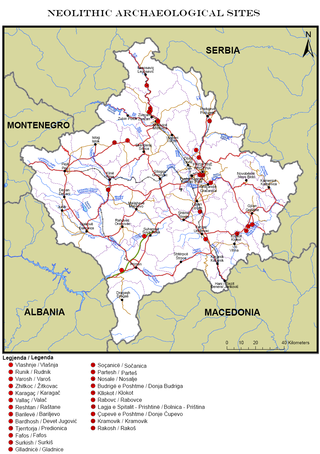
This is a description of Neolithic sites in Kosovo. The warm, humid climate of the Holocene which came soon after the ice melting of the last glacial period brought changes in nature which were reflected in humans, flora and fauna. This climatic stabilization influenced human life and activities; human society is characterized by changes in community organization and the establishment of permanent settlements in dry places, near riverbanks and on fertile plateaus.
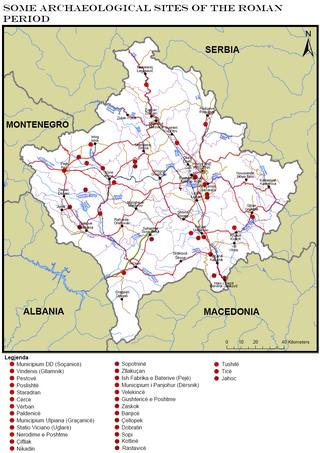
The Roman heritage sites in Kosovo represent a multitude of monuments of material and spiritual culture, which reflect the Roman period in this region. Among them, a special place is occupied by those that represent the development of art, such as the plastic monuments that are more frequent, and at the same time occupy an important place, because with the presentation of figures in relief and with numerous inscriptions they speak to us enough for this period.

Part of a series of articles upon Archaeology of Kosovo

Viciana or Station Viciano was a Roman road station of unclear location, somewhere in Kosovo field.

Duboc Fortress is situated above the Ceçan, part of the Ciçavica mountain chain, in the village of Duboc, approximately 10–12 km in the south-west of the Municipality of Vushtrri.
Pajazit Nushi was a university professor, psychologist and scientific and social-political worker from Gjakova, Kosova. Member of the Academy of Sciences and Arts of Kosovo.
Zef Mirdita was an Albanian historian, university professor and academic from Prizren, Kosovo. He has made a significant contribution to the fields of Illyrology and Balkan studies.
Shefik Osmani was an Albanian pedagogist, scholar, researcher, and educational theorist.
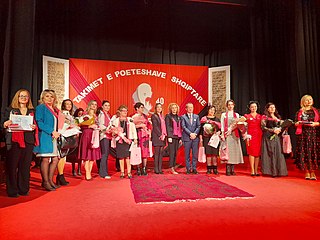
The Gatherings of Poetesses in Vushtrri is an annual poetry festival of women and girls held in the city of Vushtrri in Kosovo, under the patronage of the city municipality. During the several decades of its existence, the Festival has awarded some of the most notable Kosovan and Albanian poetesses.
Skënder Anamali was one of the founders of Albanian archaeology. He made significant contributions to the field of Illyrian studies.
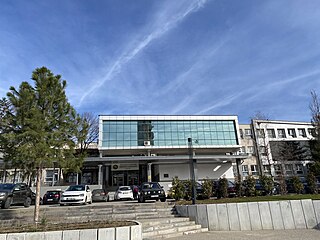
The Faculty of Philology is an academic unit within the University of Pristina. Established in 1988 after gaining independence from the Faculty of Philosophy, its roots can be traced back to the Higher Pedagogical School of Prishtina (1958) and the Faculty of Philosophy (1960).

Dea Dardanica is an archaeological artifact found in Kosovo that represents an ancient deity associated with the Dardania region, located in the central-western Balkans, which encompasses parts of modern Kosovo and western North Macedonia.

The University of Gjakova "Fehmi Agani" - UGJFA is a public university located in Gjakova, Kosovo. It was originally established as a Higher Pedagogical School in 1967 and has since grown into a comprehensive university.

The University Clinical Center of Kosovo (UCCK) is the largest and most prominent medical institution in Kosovo, located in Prishtina, the capital city. The UCCK provides a wide range of medical services, including specialized treatments and surgeries, and plays a crucial role in healthcare delivery and medical education within Kosovo.
Hajrullah Koliqi (1946) is an educator, lecturer and university professor.
